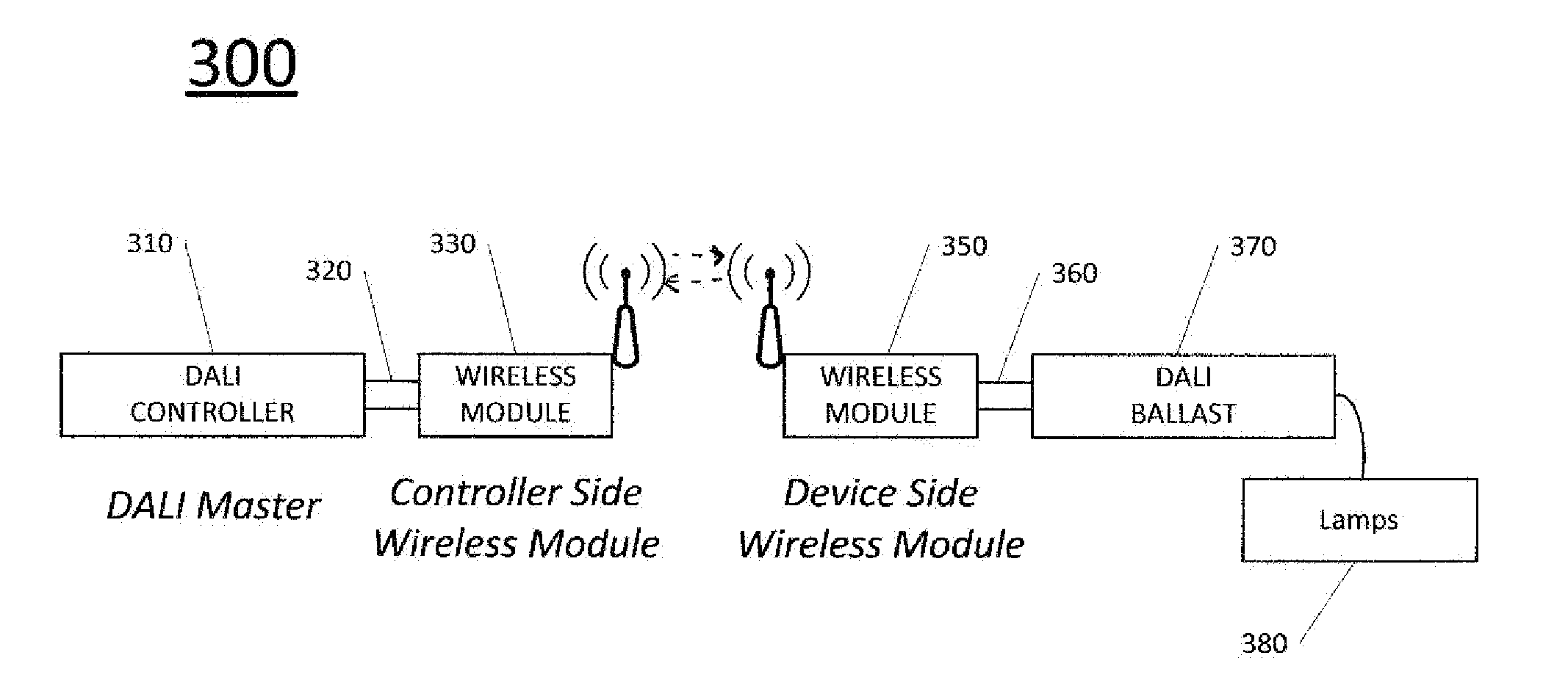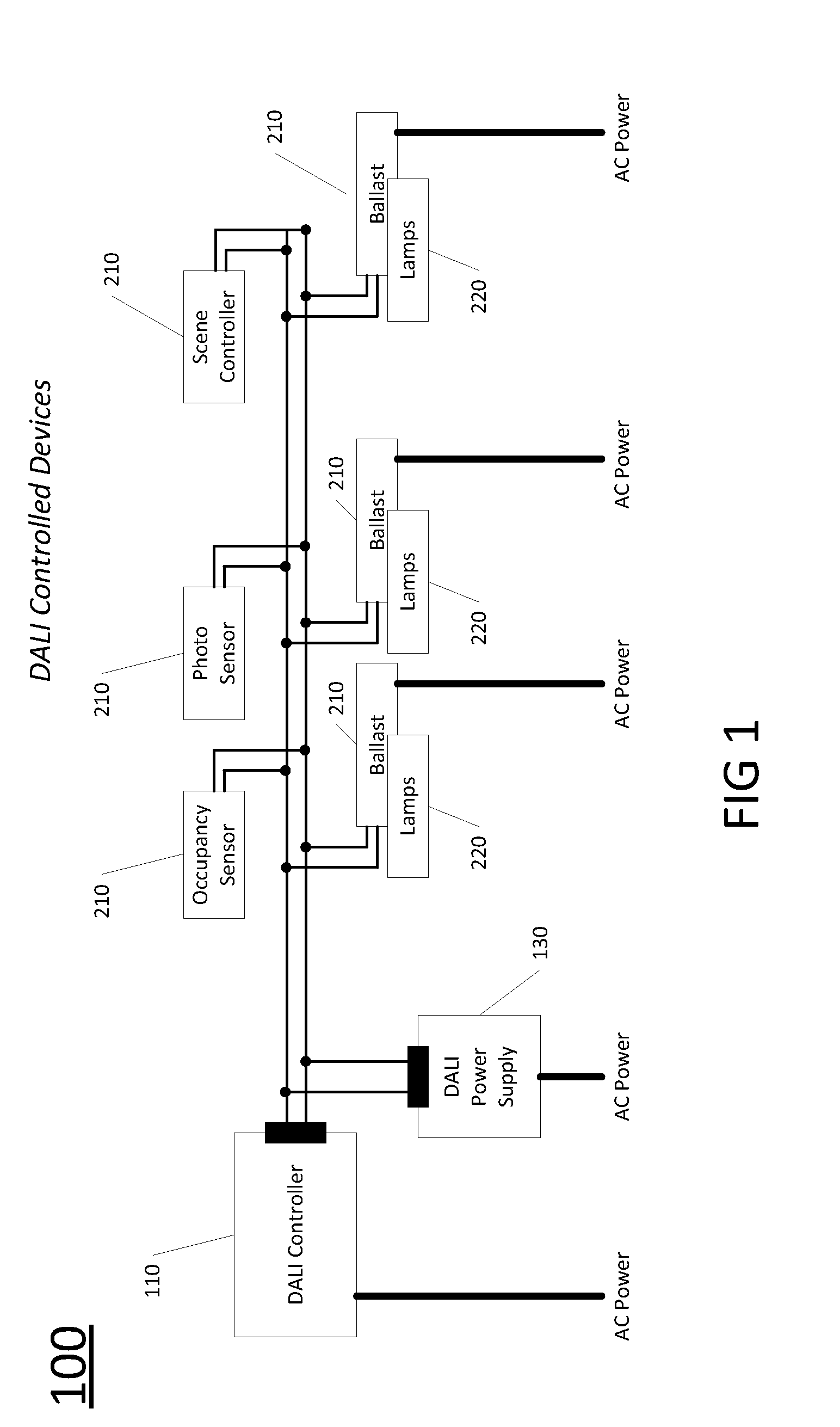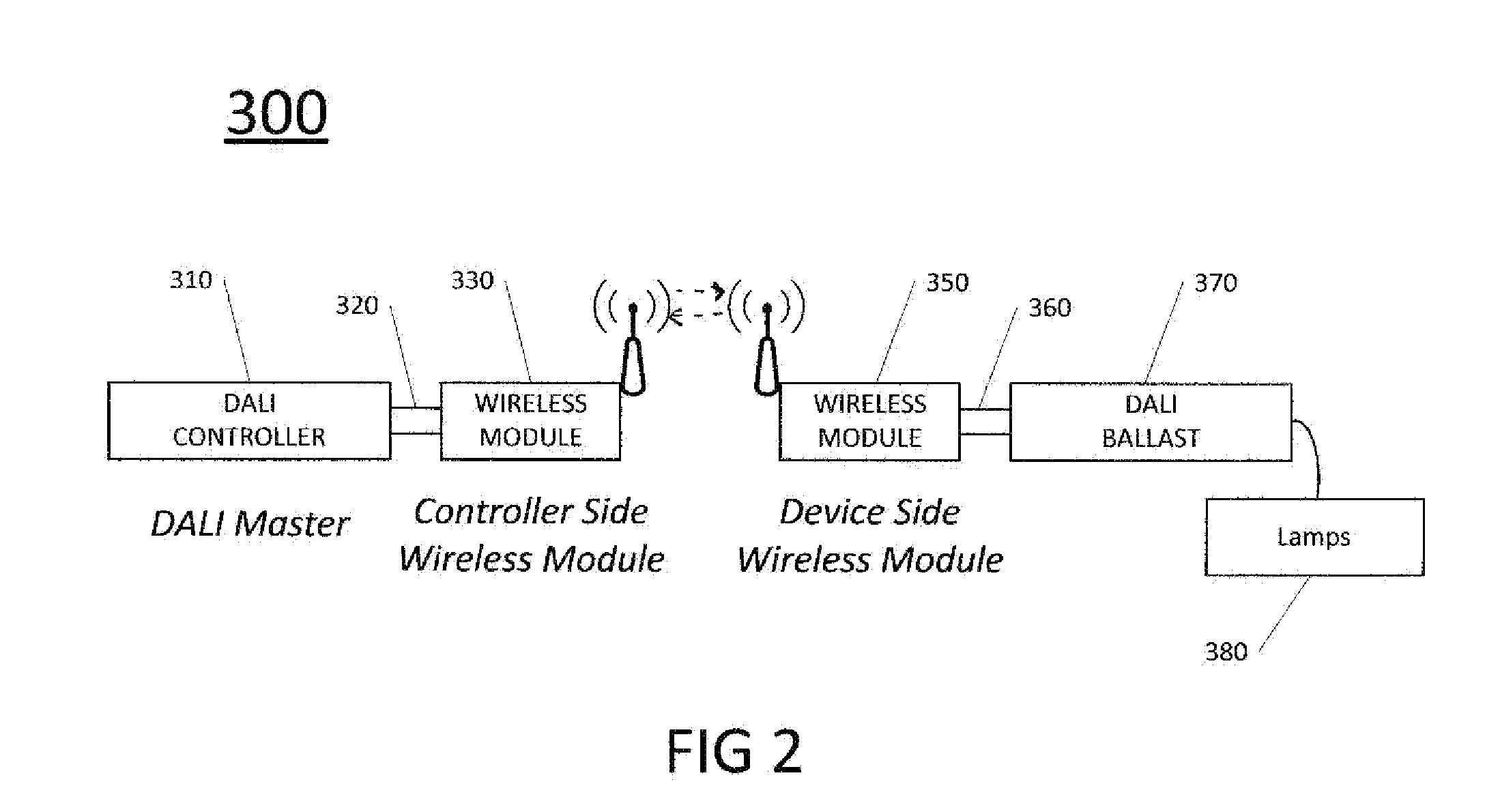Encapsulation of DALI Commands in Wireless Networks
a wireless network and command technology, applied in the direction of process and machine control, ignition automatic control, instruments, etc., can solve the problems of exceeding the timing requirements of the dali protocol, dali incompatible with wireless communication media, and communication between devices cannot be guaranteed to occur within the maximum response time of the dali specification
- Summary
- Abstract
- Description
- Claims
- Application Information
AI Technical Summary
Benefits of technology
Problems solved by technology
Method used
Image
Examples
Embodiment Construction
[0057]The present invention relates to the encapsulation of DALI commands in wireless networks.
[0058]In FIGS. 2 through 6 a preferred embodiment of an exemplary lighting control system is depicted. A DALI controller 310 (master) is connected via a first two wire data bus 320 (e.g. a twisted pair wire) to a controller-side wireless module 330. The controller-side wireless module 330 communicates via any common wireless communication protocol (e.g. Wi-Fi, Zigbee) to at least one ballast-side wireless module 350. Each ballast-side wireless module 350 is connected via a second two wire data bus 360 to at least one DALI ballast 370 (slave) which is connected to at least one lamp bank 380. To simplify the description of the preferred embodiment, consider the example where a single ballast-side wireless module 350 communicates using Zigbee communication with the controller-side wireless module 330 and where the single ballast-side wireless module 350 is connected to a single DALI ballast 3...
PUM
 Login to View More
Login to View More Abstract
Description
Claims
Application Information
 Login to View More
Login to View More - R&D
- Intellectual Property
- Life Sciences
- Materials
- Tech Scout
- Unparalleled Data Quality
- Higher Quality Content
- 60% Fewer Hallucinations
Browse by: Latest US Patents, China's latest patents, Technical Efficacy Thesaurus, Application Domain, Technology Topic, Popular Technical Reports.
© 2025 PatSnap. All rights reserved.Legal|Privacy policy|Modern Slavery Act Transparency Statement|Sitemap|About US| Contact US: help@patsnap.com



